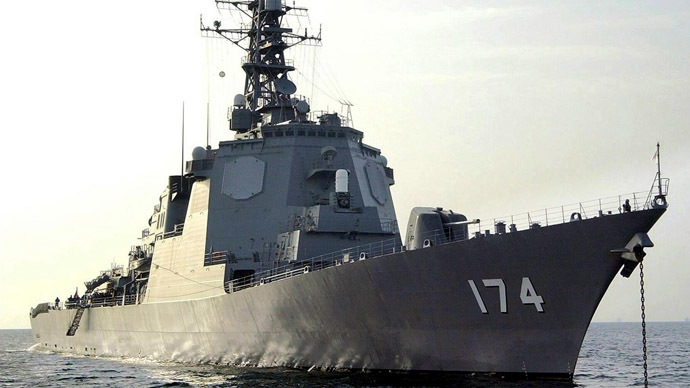Tokyo orders military to shoot down missile launches by N. Korea

Following North Korea’s launching of mid-range ballistic missiles over the sea last Saturday, Japan has promised to use one of its destroyers in the Sea of Japan (East Sea) to shoot down any further possible launches in April that may threaten Japan.
The order to intercept was issued on Thursday by Defense Minister Itsunori Onodera and concerned any launches that may take place from April 3-25, the 82nd anniversary of the founding of the Korean People's Army, according to The Asahi Shimbun.
The Aegis destroyer Kirishima, carrying Standard Missile 3 (SM-3) interceptors was sent to the Sea of Japan (East Sea) with orders to shoot down anything that ventured into Japanese territory. This is the fifth interception order since 2009. All were issued to counter North Korean missile launches.
The Rodong missiles launched by North Korea last Saturday stopped halfway in their maximum range of around 1,300km, plummeting into the sea after a 640km flight. Japan’s own Aegis destroyers are more than well equipped to deal with such threats, with their advanced radar capacity for locking onto multiple targets.
Pyongyang’s defiant move to deploy the Rodong came just as US President Barack Obama was meeting with South Korean and Japanese officials in The Hague to discuss earlier short-range launches by North Korea, which in late March fired 30 missiles into the Sea of Japan (East Sea) – the second time in a week, while neighboring South Korea was engaged in military drills with the United States.
That had been Pyongyang’s longest-range missile test since December 2012 and the first time a Rodong missile had been tested since 2009.
What followed was South Korea testing its own new invention – a longer-range ballistic missile than the Rodong. The two have also exchanged border fire recently, with no damage on either side.
But North Korea has also given everyone a scare. The UN Security Council had harsh words following Pyongyang’s latest missile test. Immediately afterwards the rogue state threatened that a “new form” of nuclear test was in the works.
Seeing this to be a violation of existing UN resolutions (themselves set up with North Korea in mind), the international body said it was considering an “appropriate response.” Pyongyang’s envoy to the UN said that the United States had a “red line” that it shouldn’t try to cross by attempting“regime change”.
Minister Onodera issued the order without public announcement, so as not to derail the official high-level talks that were restarted at the end of March between Tokyo and Pyongyang. Reports indicate progress is yet to be reached, promising more discussions to come.
Efforts had been made “not to stir up public anxiety and give strong consideration to the diplomatic relations between Japan and North Korea,” government officials have explained, as cited by The Asahi Shimbun.
One of the talking points is the abduction of Japanese citizens in the 1970s and 1980s, but also more pressing issues, like Pyongyang’s nuclear program and constant threats to launch its mid-range missiles.














